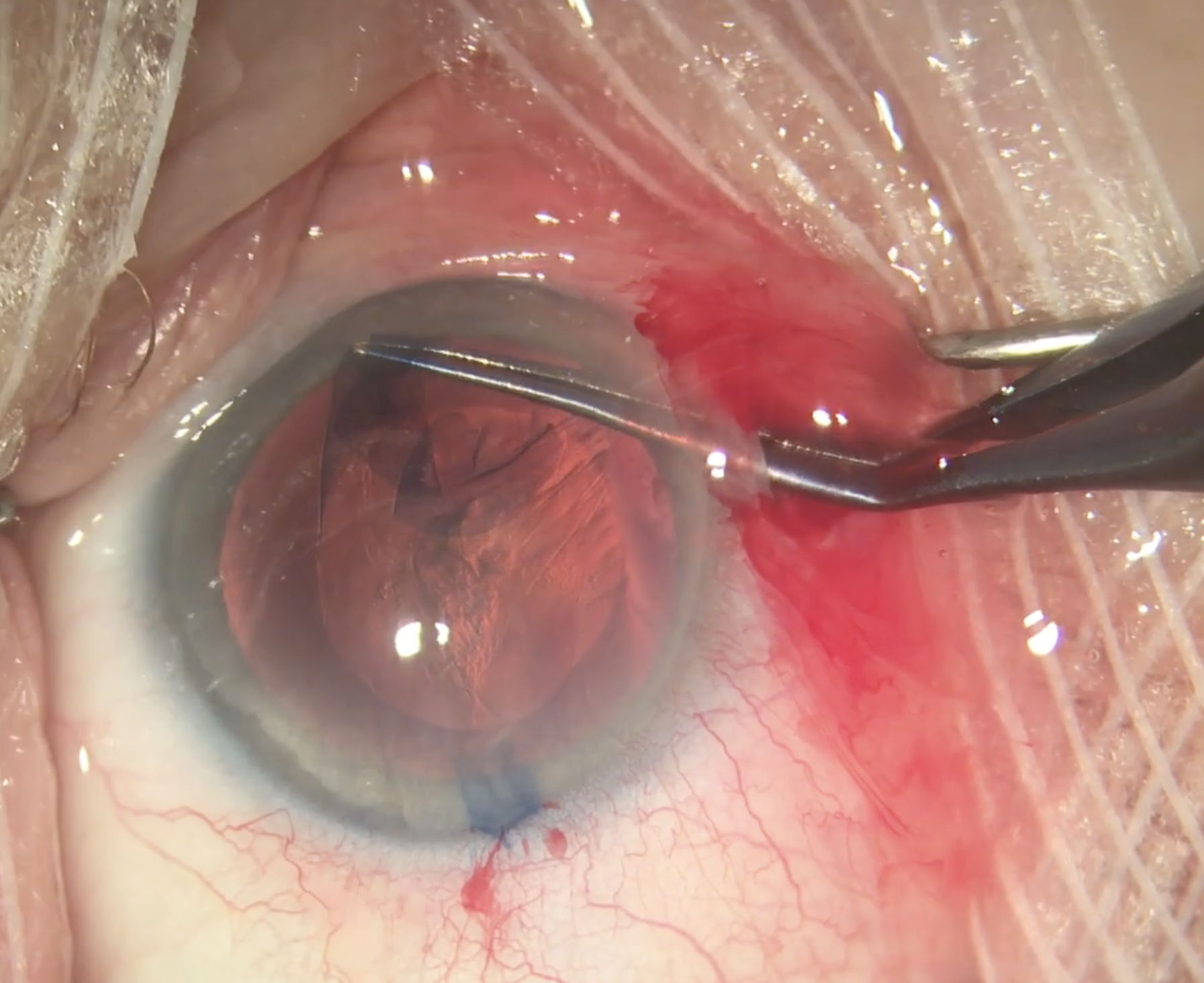 |
|
Only 1.9% of anticipated ISBCS patients opted out of second-eye operation, which bodes well for this procedure’s increased efficiency in the event it becomes possible to adopt here. Photo: Christina Tran, BS, and Leonid Skorin, Jr., DO, OD. Click image to enlarge. |
Increased efficiency at surgical centers and negligible risk argue for the adoption of same-day dual cataract removal in regions where demand far outstrips supply, such as the US. However, widespread adoption of such a practice would require dramatic logistical and financial changes that are not in the offing any time soon. The Centers for Medicare and Medicaid Services have yet to bless such a protocol, all but stopping it in it tracks.
Nevertheless, the experience of surgeons outside the US gives us a window into outcomes we could anticipate if circumstances change. In the UK, immediate sequential bilateral cataract surgery (ISBCS) was introduced into government-sanctioned guidelines in 2017 and has become increasingly popular there, but still only comprises 0.5% of all cataract operations performed nationally.
The Buckinghamshire Healthcare NHS Trust redesigned its service to routinely offer ISBCS and is now considered a leading provider of the service in the UK. As such, it audited its cataract operations performed in 2022 to gain greater insight on the spread of the newer approach. In total, 4,652 cataract operations were performed; 10.7% (n=498) were operations using the ISBCS approach on 249 patients. Trainee surgeons performed 32.5% of these cases, and there were only two intraoperative complications, which both occurred during the second eye operation. One of these was a suspected suprachoroidal hemorrhage while the other was a posterior capsular rupture post lens implantation. Postoperative complications included one retinal detachment needing a vitrectomy following uncomplicated ISBCS and five instances of Irvine-Gass syndrome managed medically.
In a recent article for the journal Eye, the study authors relay that, “from this data, ISBCS does not pose a greater risk to patients in terms of complications” and note that “with appropriate preoperative counseling, patients listed for unilateral surgery can be converted to ISBCS on the day of operation to fully utilize theatre capacity. Patients listed for ISBCS can also be converted to unilateral surgery on the day of operation when surgeons need time to deal with complications safely.”
In their discussion, the researchers further elaborate on the benefits this dual procedure may provide. They explain how doing ISBCS is quicker to perform on one patient than doing two separate cataract operations on differing patients due to preoperative review, patient maneuvering, setup times and post-op counseling, which are all quicker on the day, potentially meaning that “this time saving could allow for more operations to be carried out in a single theatre session,” the authors point out.
A sizeable portion of patients seem to prefer this method, too, as one study found 45% of patients on NHS cataract surgery waiting lists would undergo ISBCS if offered, while another study reported 36% of NHS patients accepting ISBCS when offered.
The investigators also argue that the one patient who experienced a macula-on rhegmatogenous retinal detachment six weeks after operation had a better outcome than she would have receiving the surgeries separately. This is because the detachment likely would have occurred before the second eye operation, thus causing a long delay before operation on that eye, which would result in worse vision and greater morbidity while recovering from the detachment. As well, this may have caused her to decline the operation in the second eye, resulting in long-term increased morbidity.
However, the authors highlight that “perhaps the greatest impact of ISBCS in years to come will be the flexibility it provides to adapt surgical lists in real-time with no additional administrative burden.” As they outline, a surgical list may consist of ISBCS cases but given any complications, surgeons may modify the procedures for the day to accommodate for increased time, dropping the procedures to only perform on one eye. Conversely, patients may be given the opportunity to opt out of the second operation on the day either before the operation or after the first eye’s completion, offering greater patient choice.
Trinh M, OK, La M, Ly A. Linking physiology and demographics, non-ocular pathology and pharmaceutical drug use to standard OCT measures of the inner retina: The PPP project. Ophthalmic Physiol Opt. July 7, 2024. [Epub ahead of print]. |


